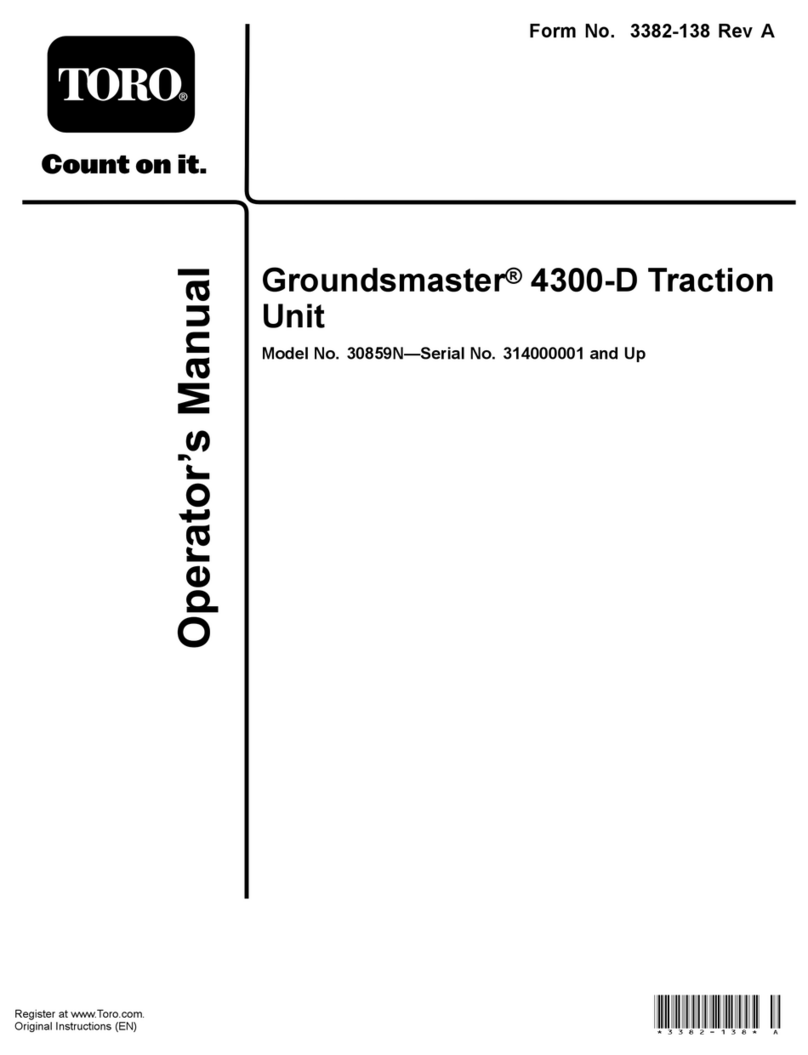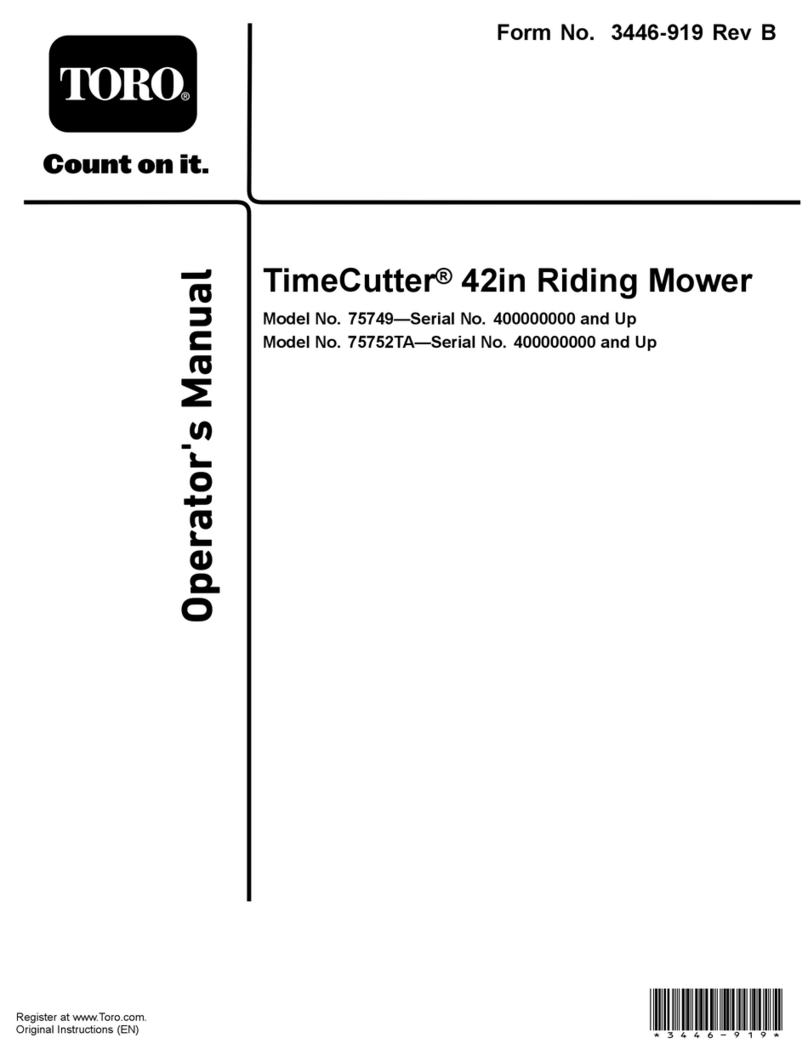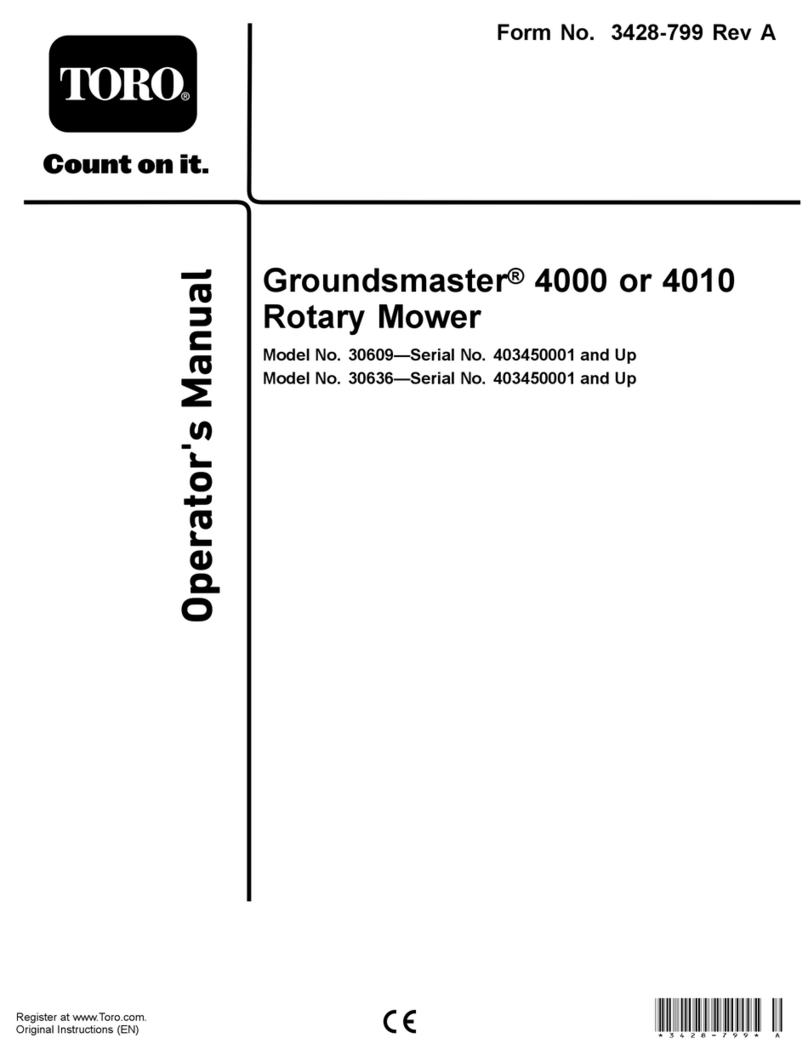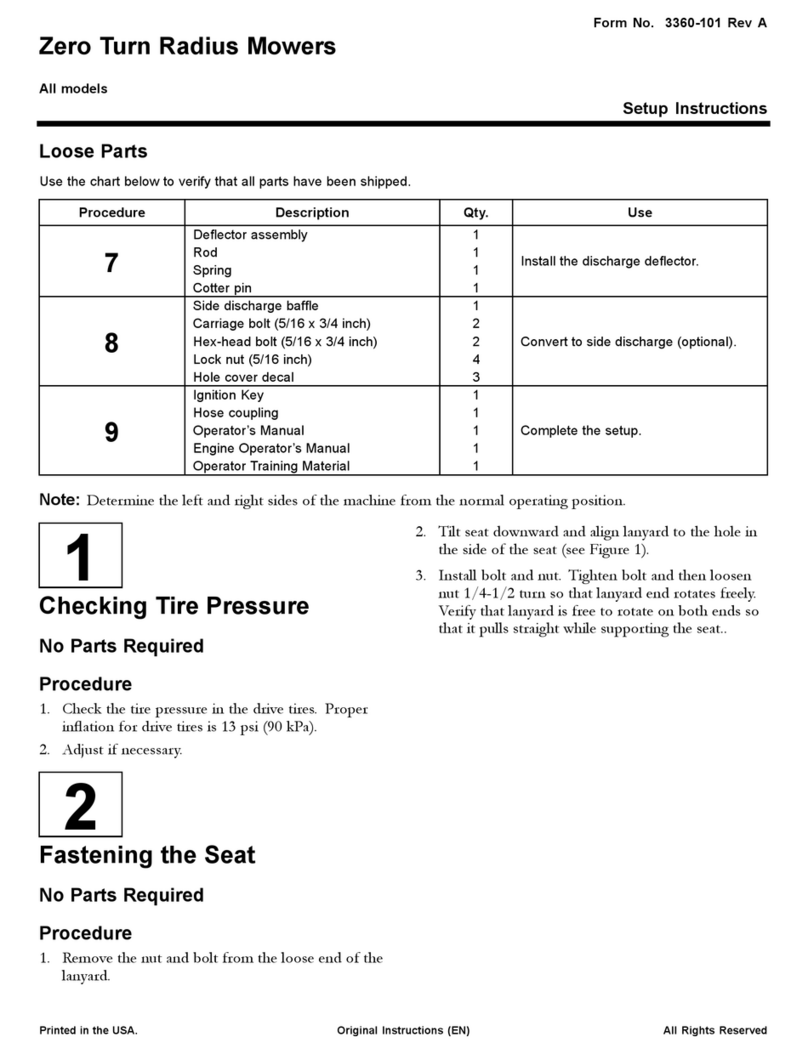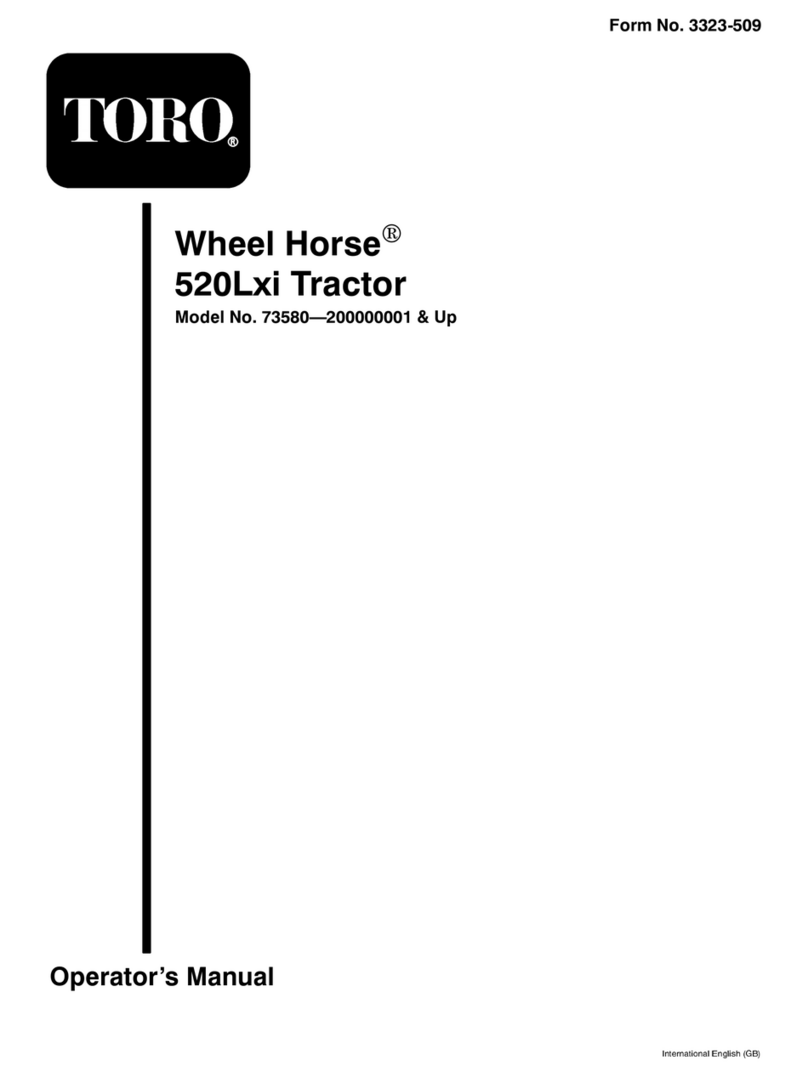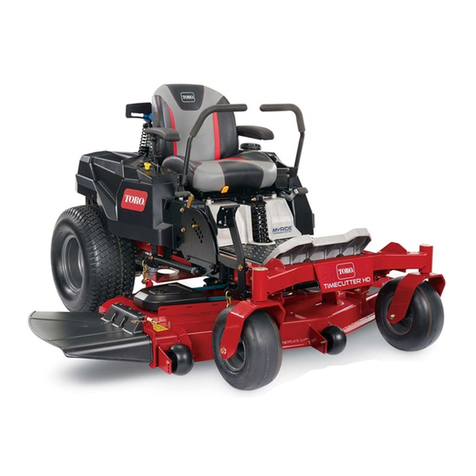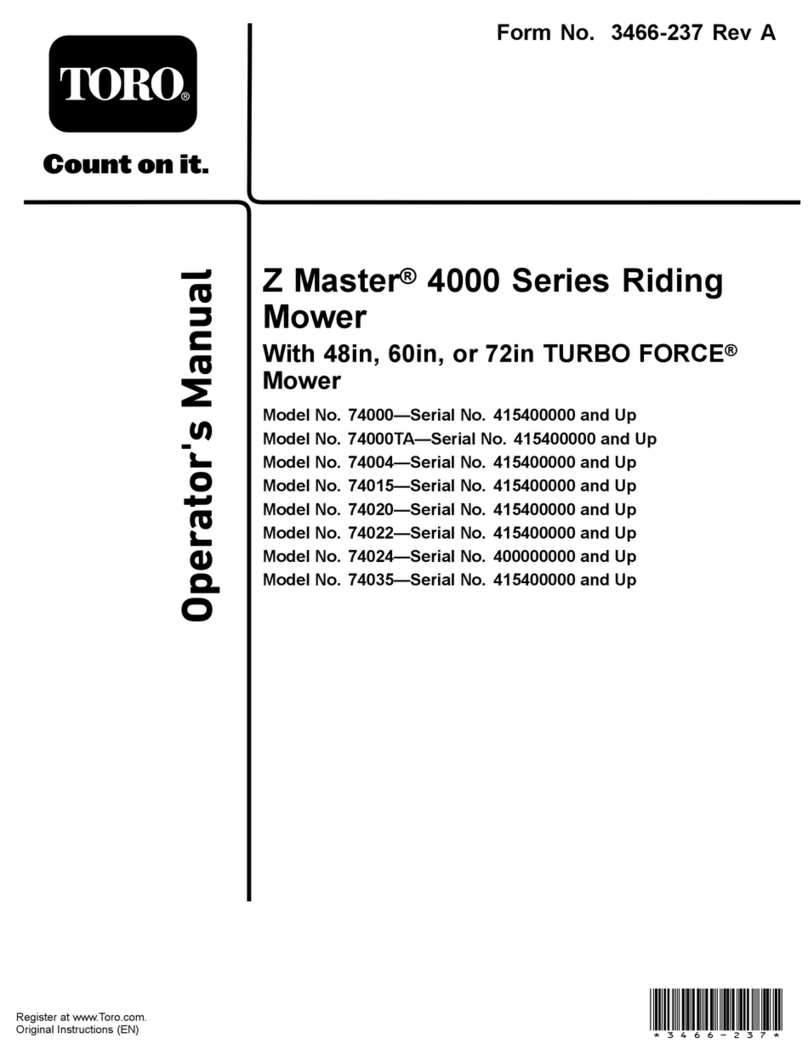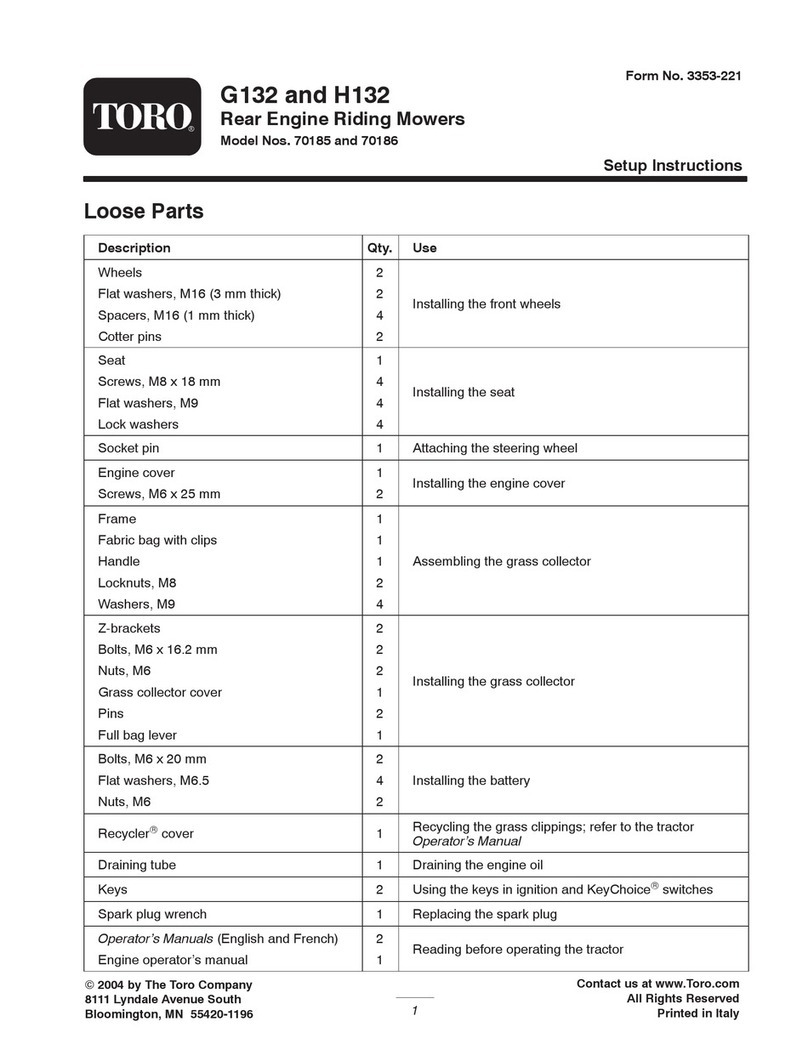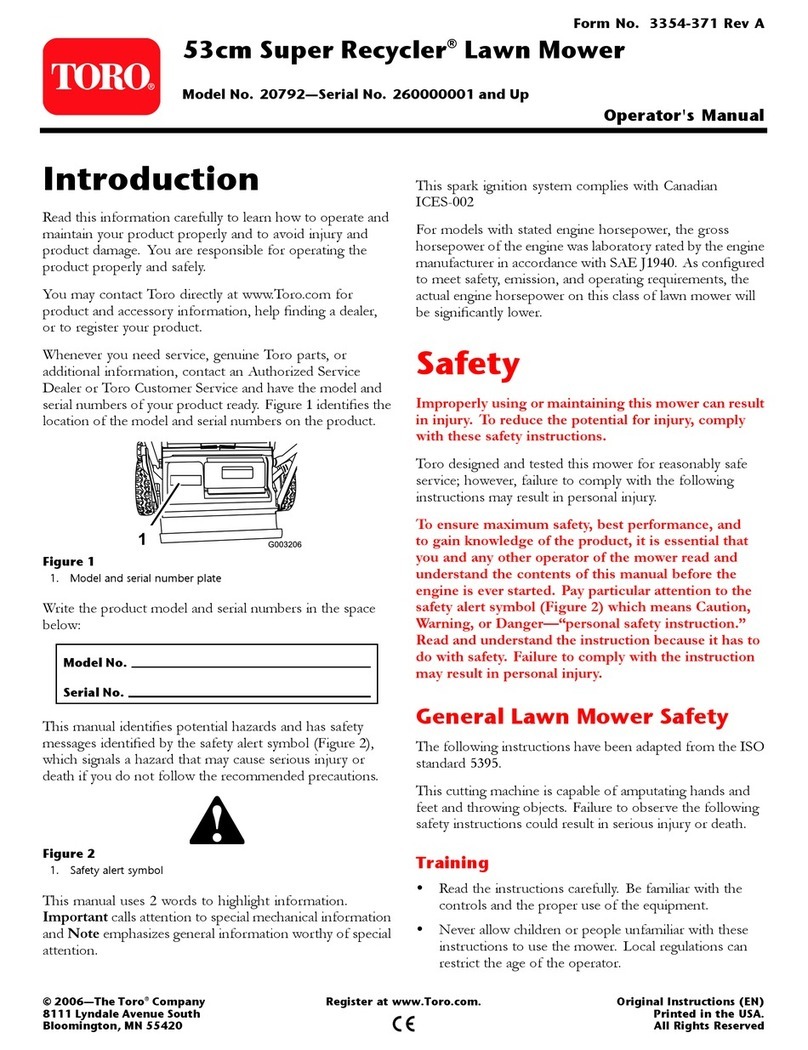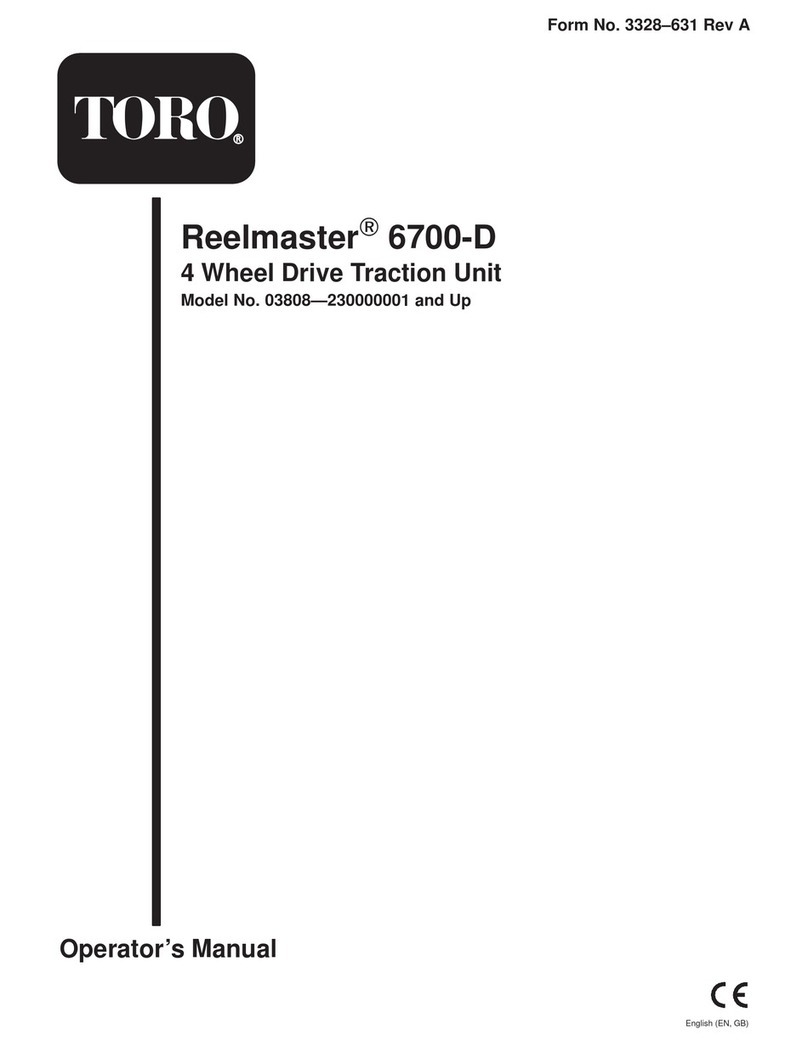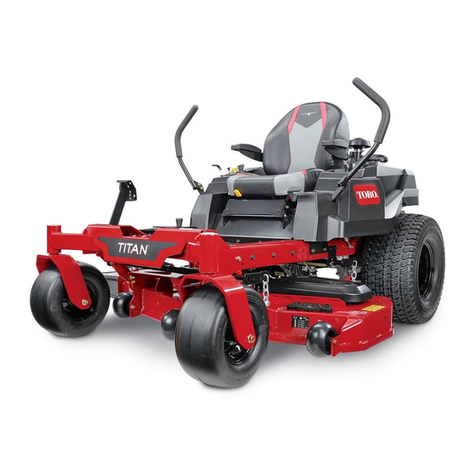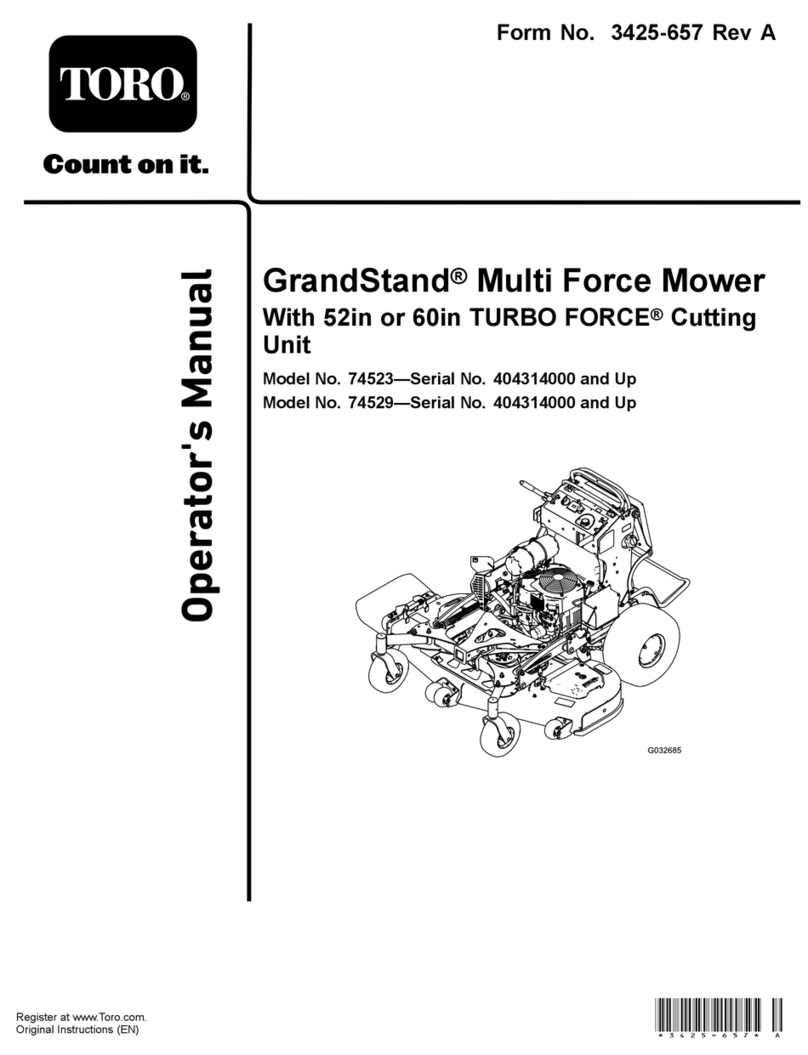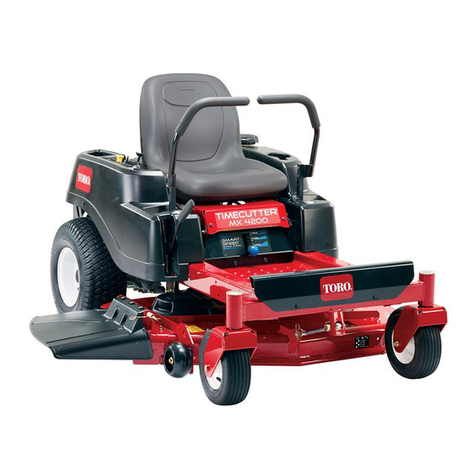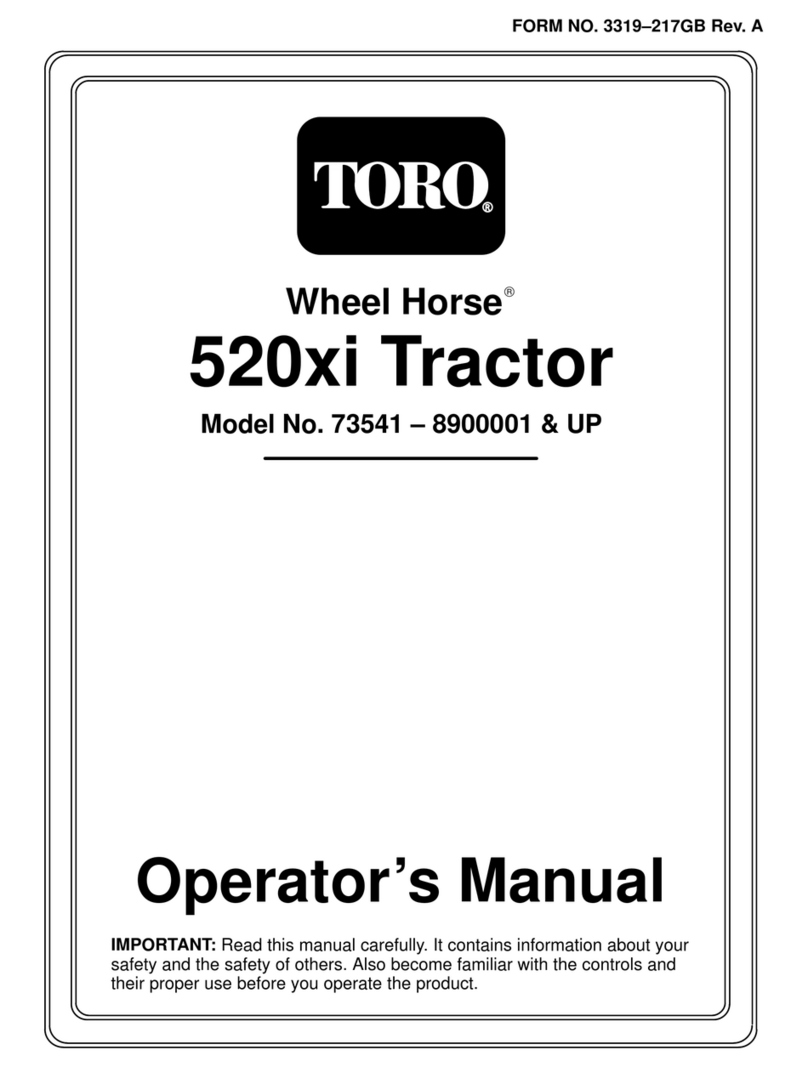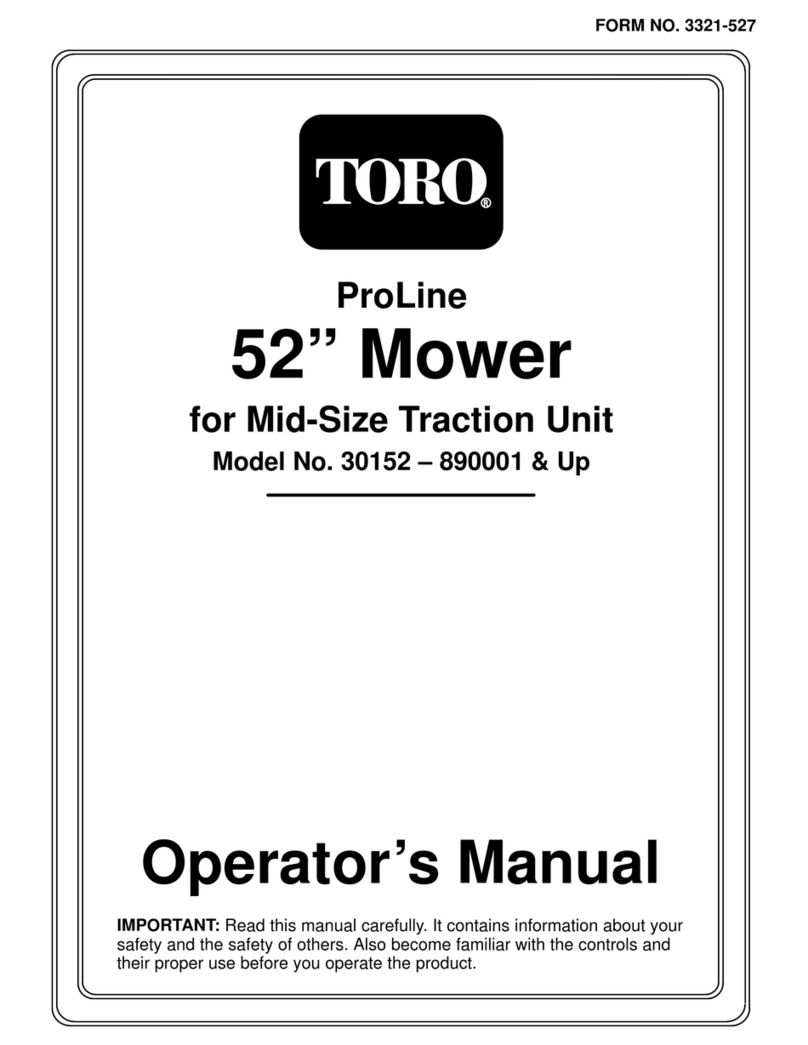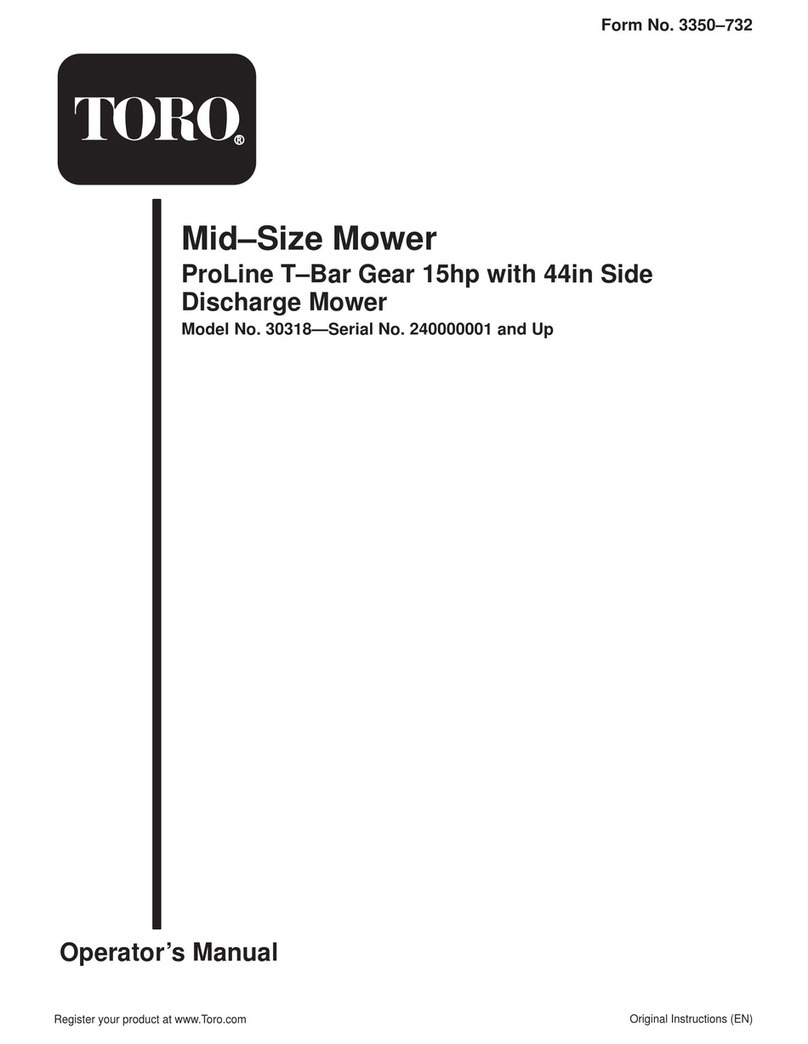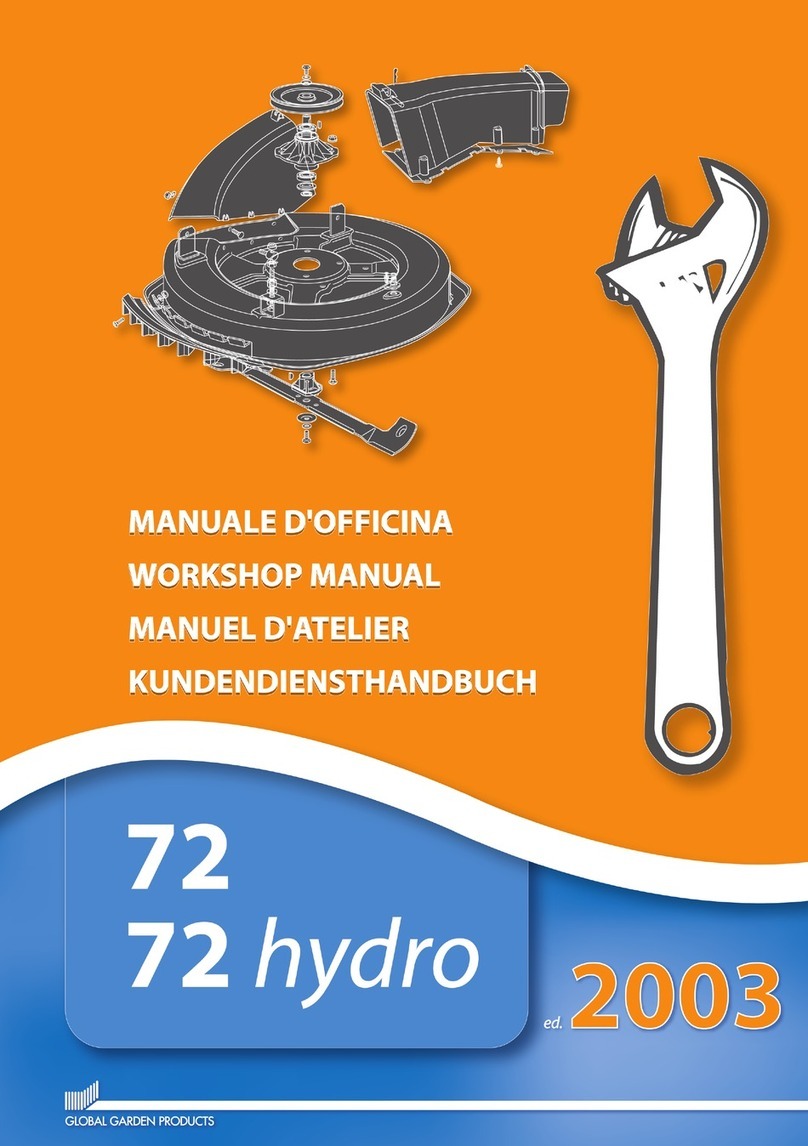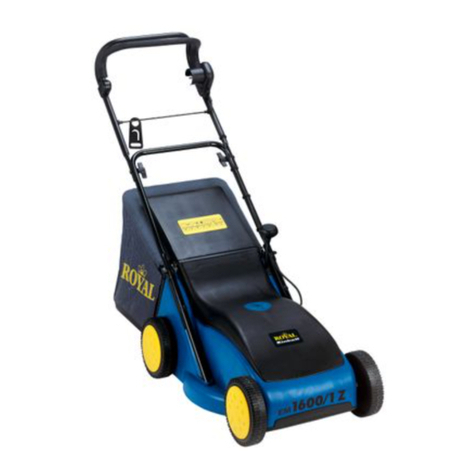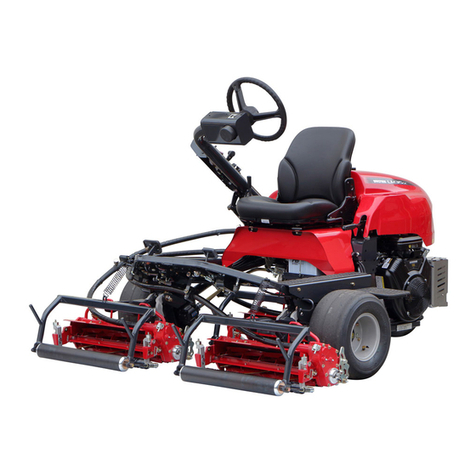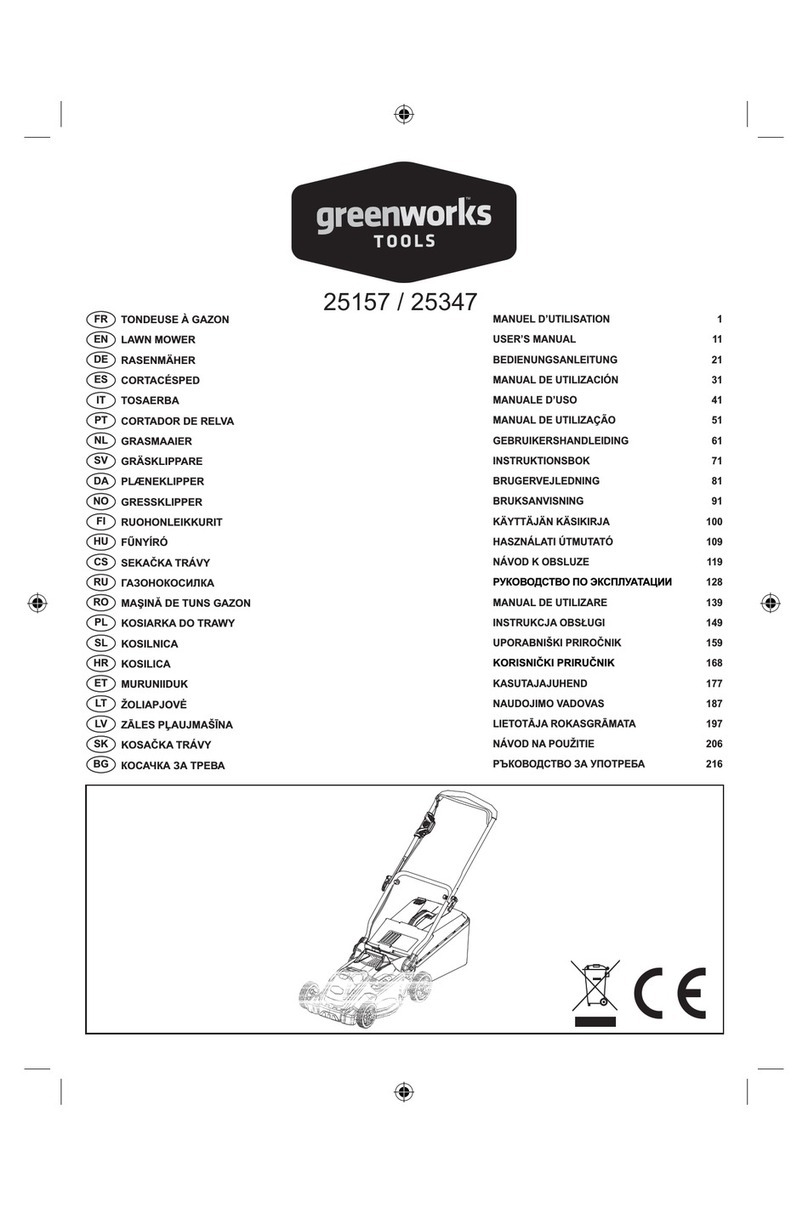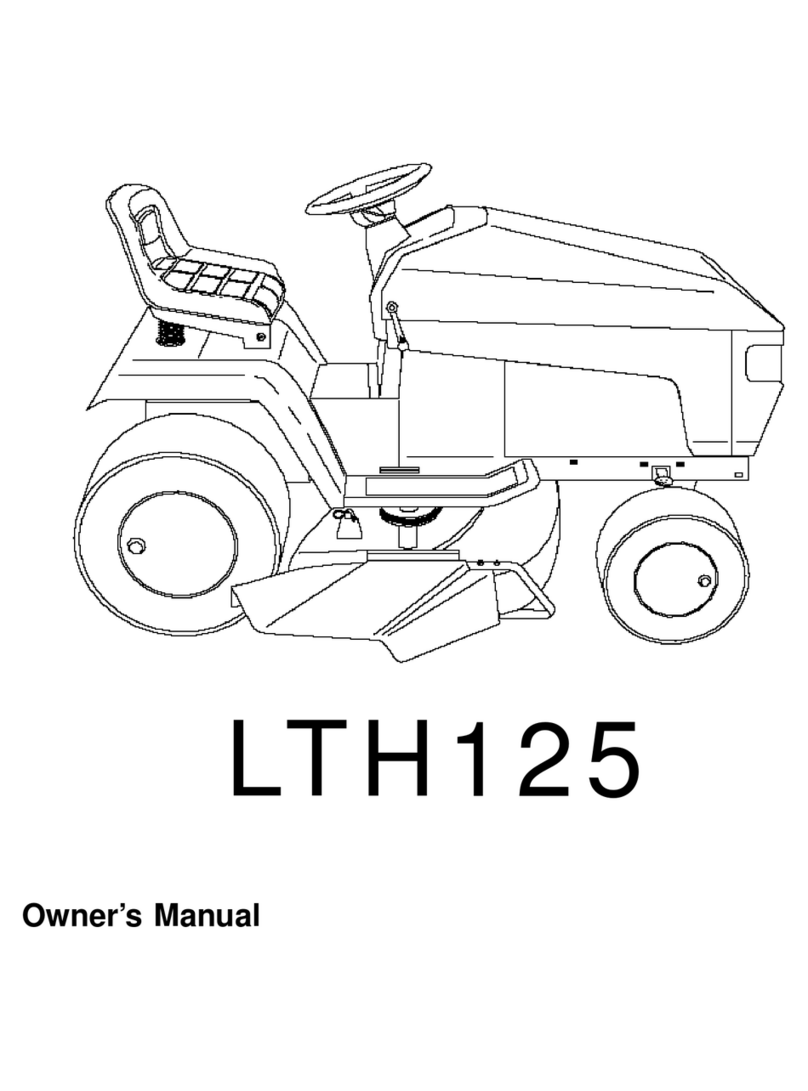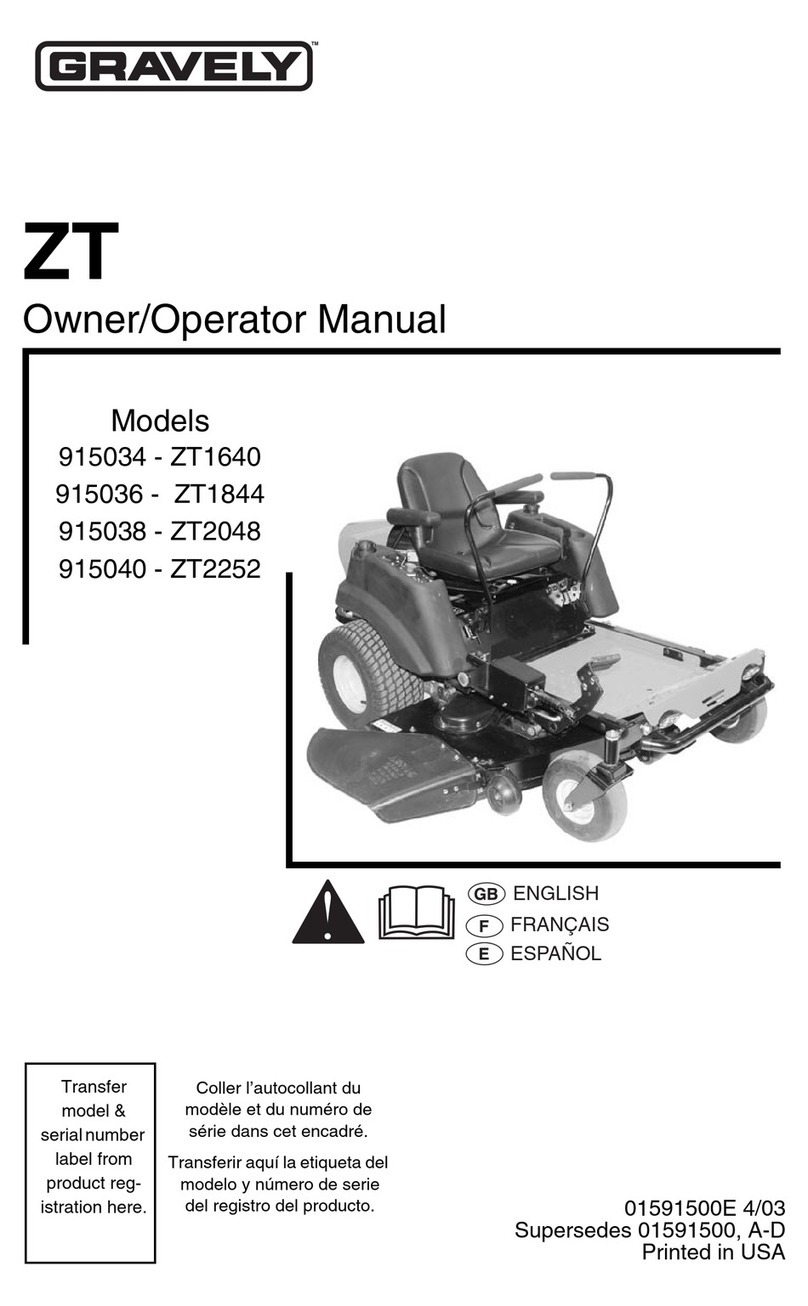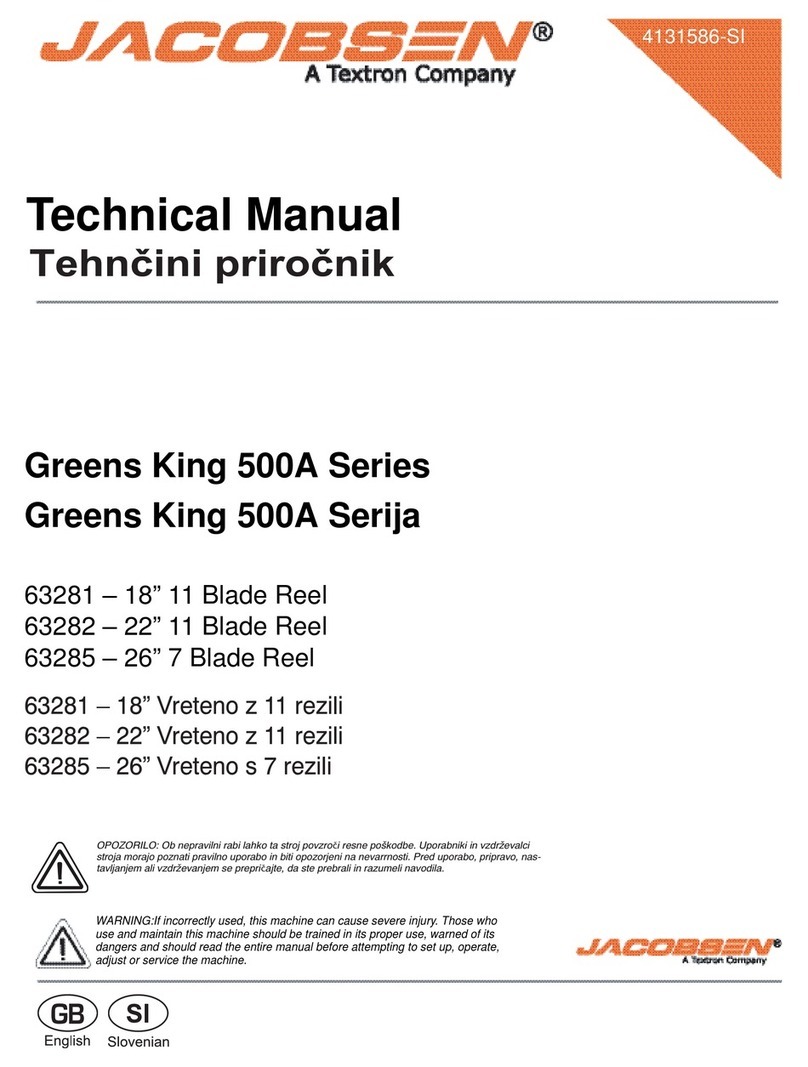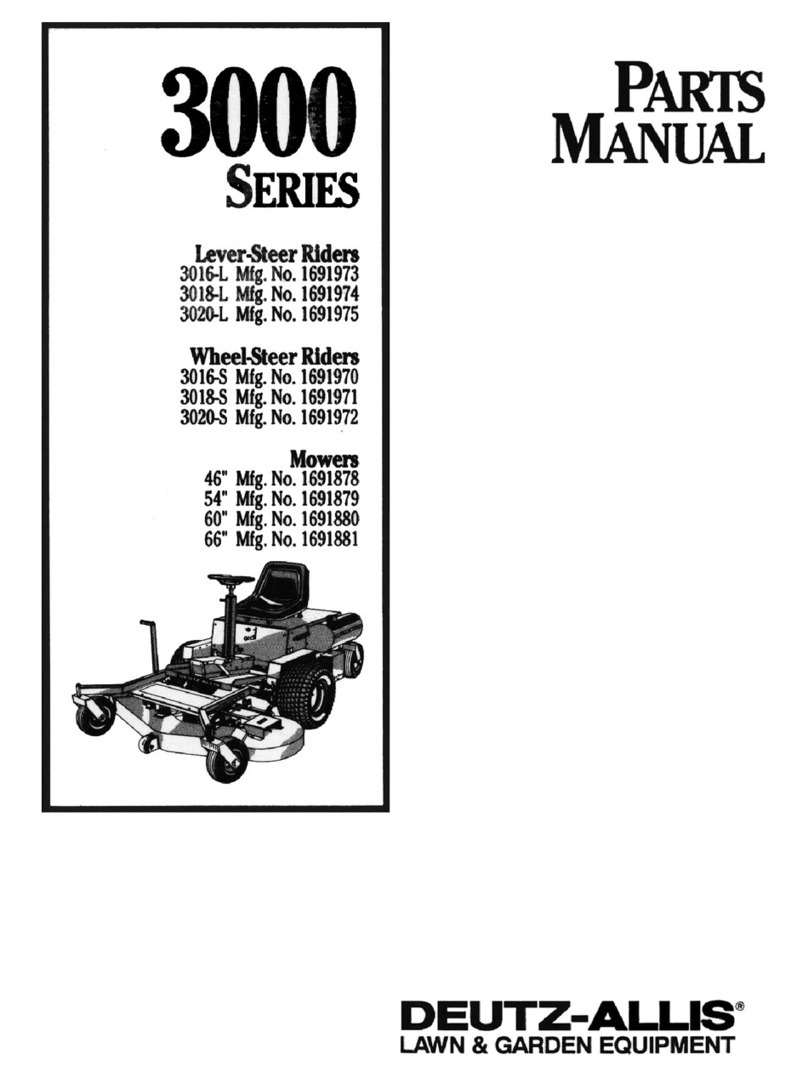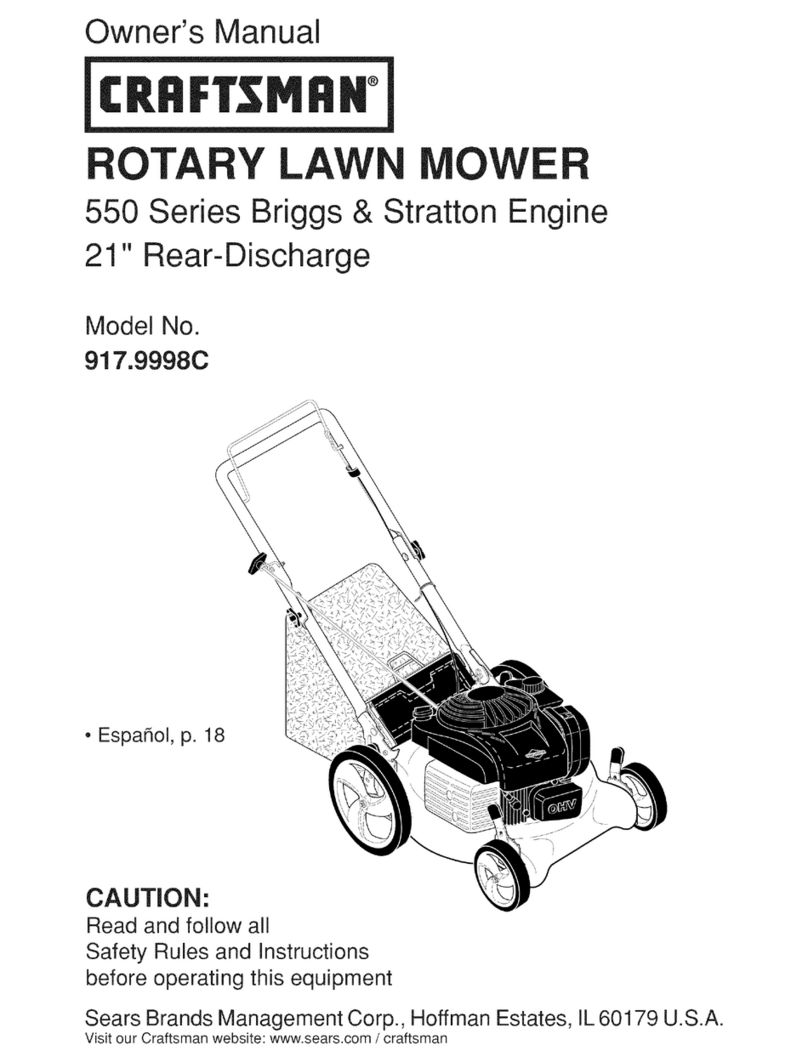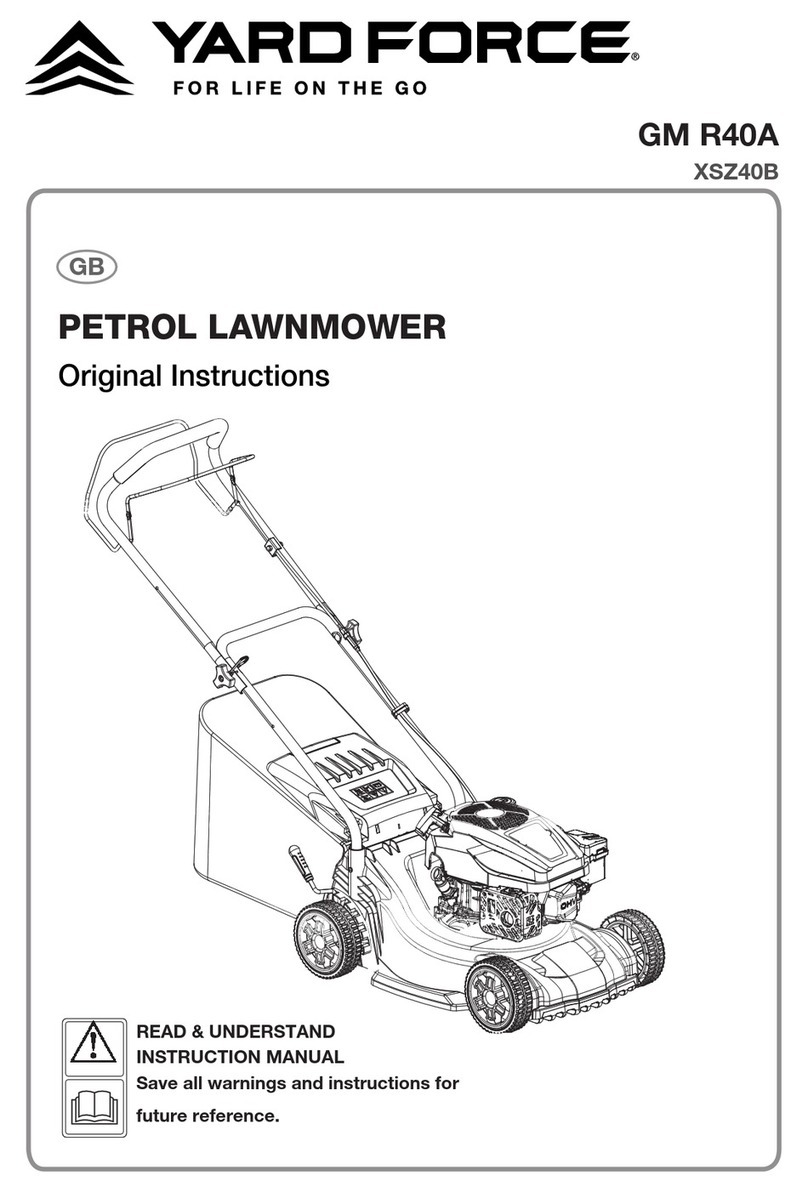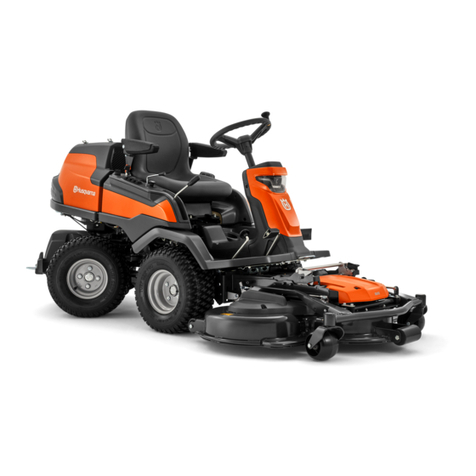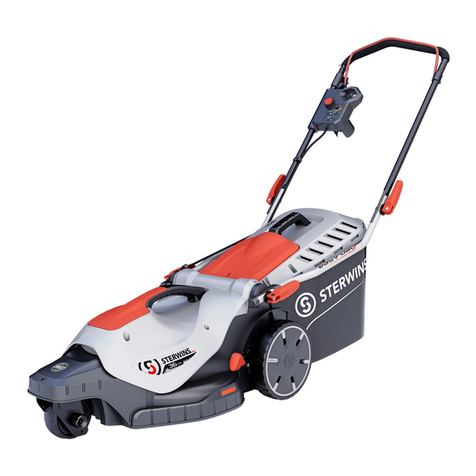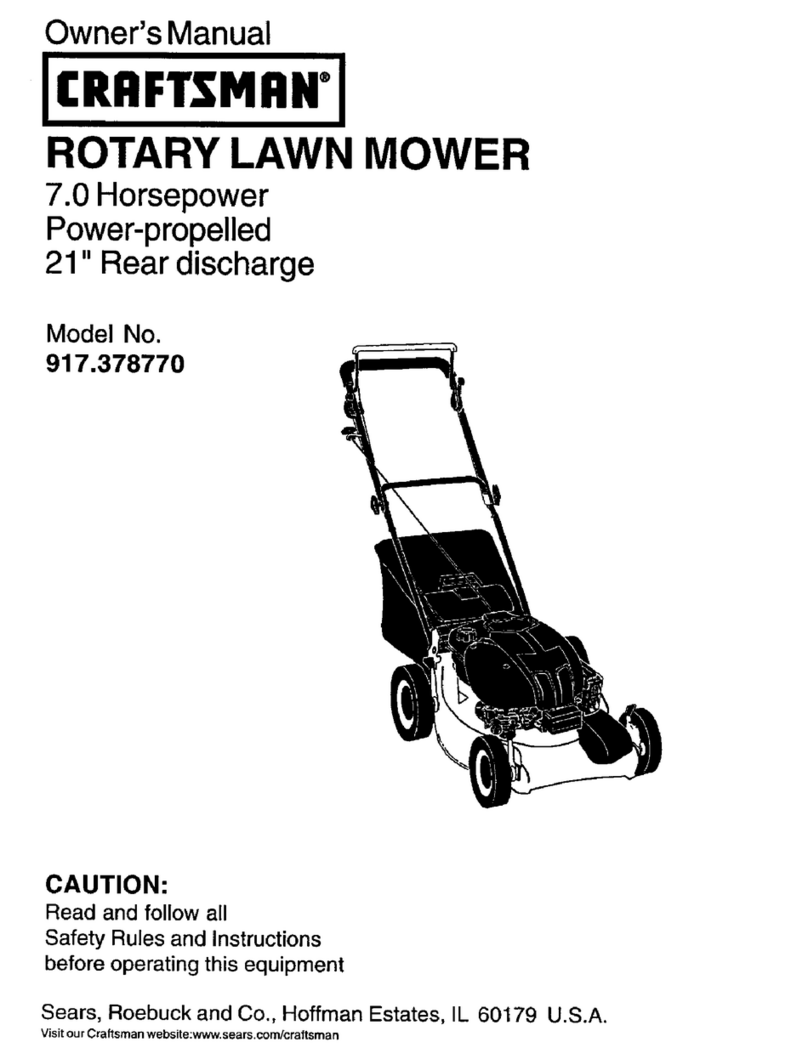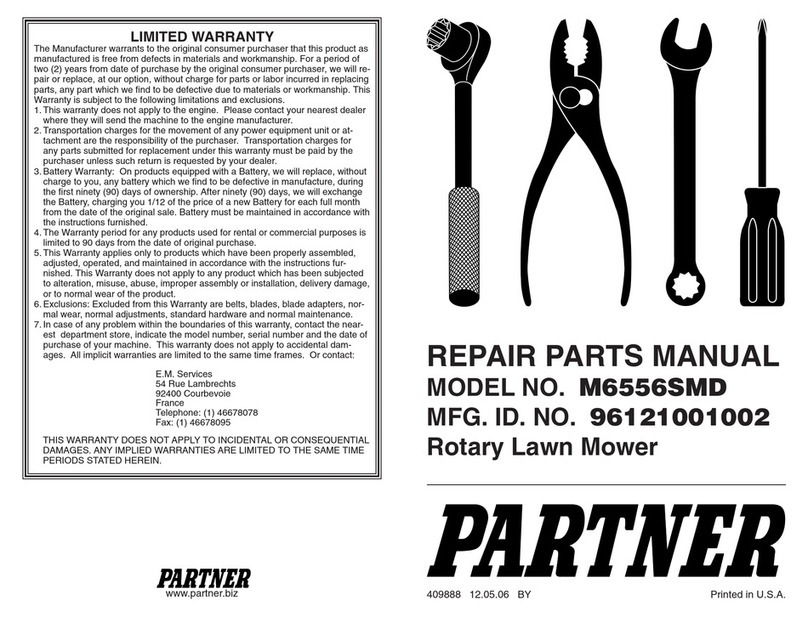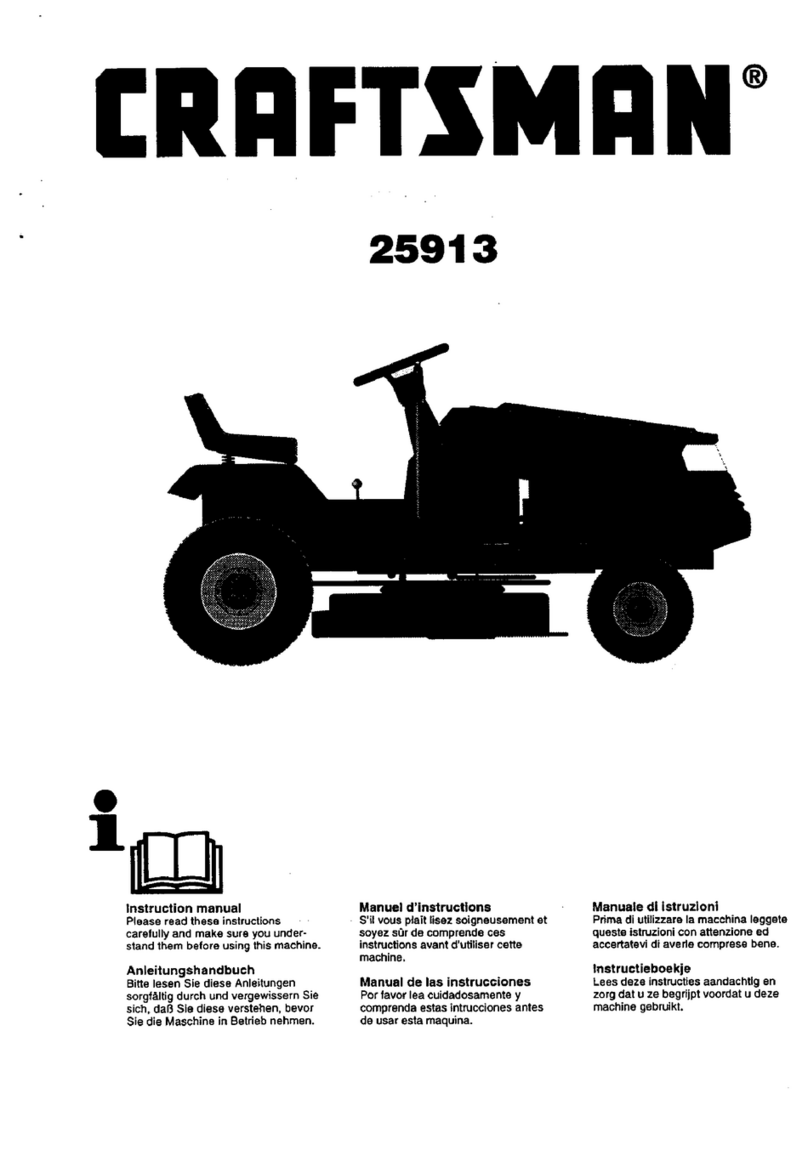
2
All Rights Reserved
Printed in the USA
2001 by The Toro Company
8111 Lyndale Avenue South
Bloomington, MN 55420-1196
Contents
Page
Introduction 2. . . . . . . . . . . . . . . . . . . . . . . . . . . . . . . .
Safety 3. . . . . . . . . . . . . . . . . . . . . . . . . . . . . . . . . . . . .
Safety and Instruction Decals 3. . . . . . . . . . . . . . . .
Specifications 3. . . . . . . . . . . . . . . . . . . . . . . . . . . . . . .
Optional Equipment 3. . . . . . . . . . . . . . . . . . . . . . .
Dimensions 3. . . . . . . . . . . . . . . . . . . . . . . . . . . . . .
General Specifications 4. . . . . . . . . . . . . . . . . . . . .
Setup 4. . . . . . . . . . . . . . . . . . . . . . . . . . . . . . . . . . . . .
Loose Parts 4. . . . . . . . . . . . . . . . . . . . . . . . . . . . . .
Adjusting the Carrier Frame 5. . . . . . . . . . . . . . . . .
Adjusting the Height of Cut 5. . . . . . . . . . . . . . . . .
Adjusting the Roller Scraper 6. . . . . . . . . . . . . . . .
Installing the Mulching Baffle (Optional) 6. . . . . .
Operation 6. . . . . . . . . . . . . . . . . . . . . . . . . . . . . . . . . .
Operating Tips 6. . . . . . . . . . . . . . . . . . . . . . . . . . .
Maintenance 7. . . . . . . . . . . . . . . . . . . . . . . . . . . . . . . .
Greasing the Bearings 7. . . . . . . . . . . . . . . . . . . . . .
Cutting Deck Service Latch 7. . . . . . . . . . . . . . . . .
Separating the Cutting Decks from the Traction
Unit 8. . . . . . . . . . . . . . . . . . . . . . . . . . . . . . . . . .
Mounting the Cutting Decks to the Traction Unit 8
Blade Plane 8. . . . . . . . . . . . . . . . . . . . . . . . . . . . . .
Inspecting the Blade Plane 8. . . . . . . . . . . . . . . . . .
Adjusting the Blade Plane 9. . . . . . . . . . . . . . . . . .
Removing the Cutter Blade 9. . . . . . . . . . . . . . . . .
Inspecting and Sharpening the Blade 10. . . . . . . . . .
Blade Stopping Time 10. . . . . . . . . . . . . . . . . . . . . .
Servicing the Rear Roller 10. . . . . . . . . . . . . . . . . . .
Servicing the Front Roller 12. . . . . . . . . . . . . . . . . .
Cutting Deck Storage 12. . . . . . . . . . . . . . . . . . . . . .
Introduction
Read this manual carefully to learn how to operate and
maintain your product properly. The information in this
manual can help you and others avoid injury and product
damage. Although Toro designs and produces safe
products, you are responsible for operating the product
properly and safely.
Whenever you need service, genuine Toro parts, or
additional information, contact an Authorized Service
Dealer or Toro Customer Service and have the model and
serial numbers of your product ready. The model and serial
numbers are stamped into a plate on the rear of the mower
deck, under the cover.
Write the product model and serial numbers in the space
below:
Model No.
Serial No.
This manual identifies potential hazards and has special
safety messages that help you and others avoid personal
injury and even death. Danger, Warning, and Caution are
signal words used to identify the level of hazard. However,
regardless of the hazard, be extremely careful.
Danger signals an extreme hazard that will cause serious
injury or death if you do not follow the recommended
precautions.
Warning signals a hazard that may cause serious injury or
death if you do not follow the recommended precautions.
Caution signals a hazard that may cause minor or moderate
injury if you do not follow the recommended precautions.
This manual uses two other words to highlight information.
Important calls attention to special mechanical
information and Note: emphasizes general information
worthy of special attention.
